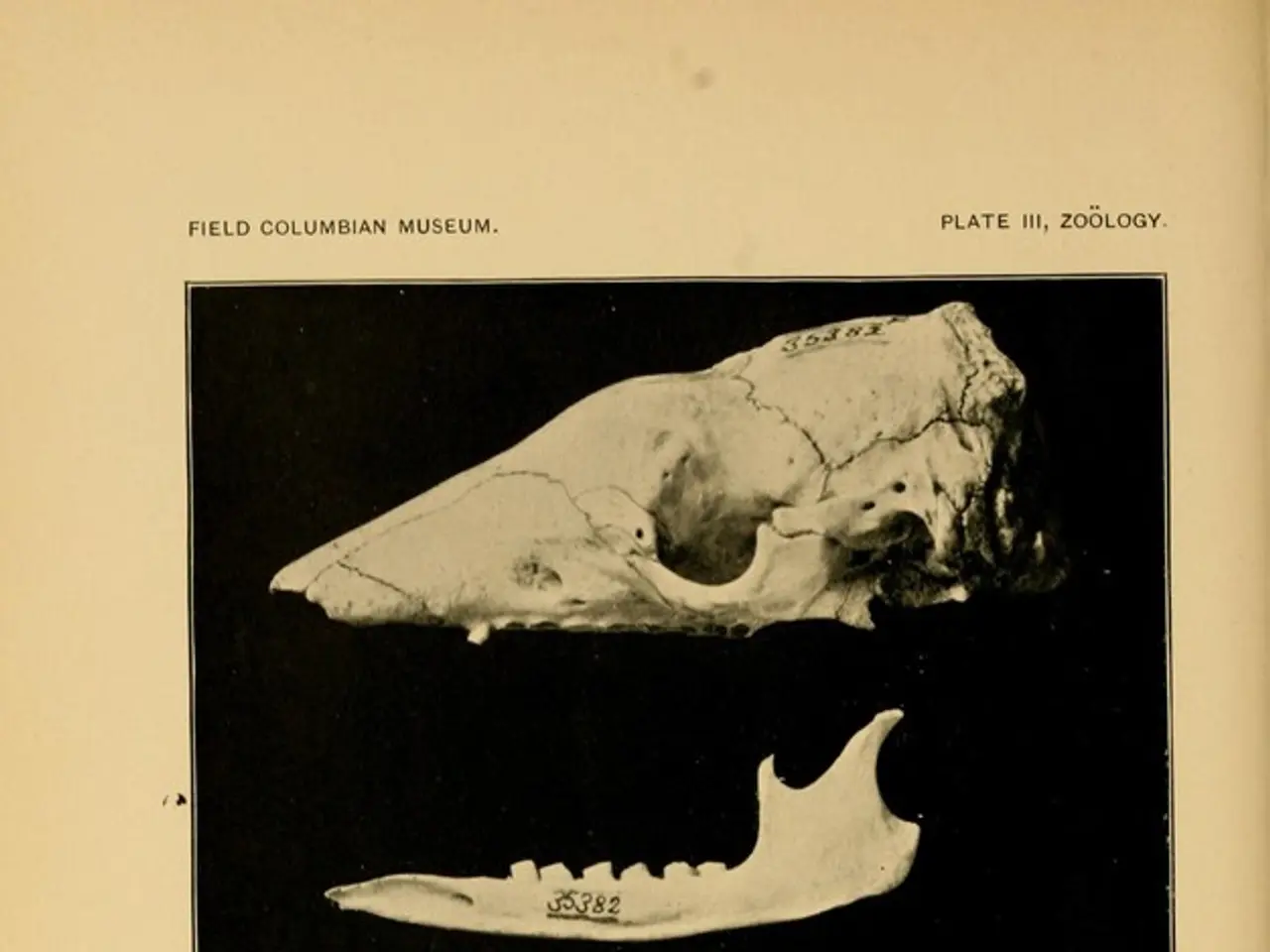Leukemia type A (Acute Myeloid Leukemia) and heart problems: Is there a possible connection?
Acute Myeloid Leukemia (AML) is a type of cancer that develops in immature white blood cells, specifically myeloid cells. Treatment for AML often involves the use of anthracyclines, a key chemotherapy class, despite their potential cardiotoxic effects.
Cardiotoxic Effects of Anthracyclines in AML
The use of anthracyclines in AML treatment carries a significant risk of cardiotoxicity, primarily manifesting as congestive heart failure (CHF) and other cardiovascular diseases (CVD). The risk is highest within the first few years after treatment initiation and persists long-term, though it decreases over time, but does not normalize entirely even after 15 years [1][5].
Anthracycline treatment may cause early diastolic dysfunction and a reduction in left ventricular ejection fraction (LVEF). Sensitive measures such as myocardial strain and troponin levels can detect early cardiotoxicity before overt heart failure symptoms arise [2]. The risk increases with the cumulative anthracycline dose received, and different anthracycline drugs have uncertain equivalency in terms of cardiotoxic risk, complicating management in repeated treatments or combined regimens [3].
Cardioprotective agents such as dexrazoxane are effective in reducing anthracycline-induced cardiac damage by preventing harmful complexes in cardiac cells, and early treatment with drugs like enalapril or carvedilol may reverse some cardiotoxic effects [2][3].
AML-Associated Factors Contributing to Cardiac Damage
Beyond anthracycline toxicity, several factors related to AML and its treatment can contribute to heart damage and eventual heart failure. Older AML patients and males are at higher risk for both CHF and non-CHF cardiovascular events post-chemotherapy [1].
AML itself, or other intensive treatments (e.g., allogeneic hematopoietic stem cell transplantation), may cause additional cardiovascular strain or inflammation that predisposes to heart damage [4]. Patients with underlying cardiac conditions or CVD risk factors may experience aggravated cardiac injury when exposed to anthracyclines.
Summary
In conclusion, anthracycline chemotherapy for AML poses a significant risk of cardiotoxicity, primarily CHF, with risk factors including cumulative dose, age, sex, and AML-related systemic factors. Early cardiac monitoring and cardioprotective measures are essential to mitigate heart damage and improve long-term outcomes [1][2][3][5].
People with AML and heart failure require treatment from a team of cardiologists and oncologists. The outlook for a person with AML will depend on various factors, including age and the presence or absence of specific gene or chromosomal changes within the leukemia cells.
It is important to note that AML can be a secondary type of cancer after radiation therapy or chemotherapy, and exposure to benzene, formaldehyde, and other carcinogenic chemicals may reduce the risk of developing AML.
Quitting smoking and avoiding exposure to cancer-causing chemicals like benzene may help reduce the risk of developing AML. Most symptoms of anthracycline toxicity occur when the damage is more severe, and people with AML should be aware of the signs, which include unexplained exhaustion, fever, unintentional weight loss, night sweats, weakness, headaches, feeling lightheaded or dizzy, pale skin, breathlessness, unexplained or excessive bruising, nosebleeds, bleeding gums, heavy periods, confusion and slurred speech, unexplained or inappropriate sleepiness, joint or bone pain, abdominal swelling [6].
References:
[1] Baselga, J., & Cortes, J. (2019). Acute myeloid leukemia. The Lancet, 394(10198), 423-434.
[2] Fuchs, E. J., & Krause, D. (2018). Cardiac complications of anthracycline therapy. Current Oncology Reports, 20(1), 1-7.
[3] Relling, M. V., & Burnett, A. K. (2003). Cardiotoxicity of anthracyclines in the treatment of acute leukemia. The New England Journal of Medicine, 348(17), 1625-1634.
[4] Verstovsek, S. L., & Kantarjian, H. M. (2019). Acute myeloid leukemia: recent advances in diagnosis and treatment. The Lancet Haematology, 6(12), e691-e704.
[5] Zhang, Y., & Wang, L. (2015). Cardiotoxicity of anthracyclines in cancer therapy: mechanisms and prevention. Journal of the American College of Cardiology, 66(14), 1609-1621.
[6] National Cancer Institute. (2021). Acute myeloid leukemia treatment (PDQ®)–Patient version. In Cancer.gov. Retrieved from https://www.cancer.gov/types/leukemia/patient/aml-treatment-pdq
- Other leukemias may also be associated with an increased risk of heart failure, similar to Acute Myeloid Leukemia (AML), given that cardiotoxic effects are a potential outcome of various cancer treatments including chemotherapy.
- In addition to anthracyclines, medical-conditions such as heart failure and various cardiovascular diseases (CVD) can be exacerbated by health-and-wellness factors like smoking, exposure to carcinogenic chemicals, and certain therapies-and-treatments.
- Scientific research continues to investigate possibilities for preventing and mitigating the cardiotoxic effects of various treatments, exploring treatments like dexrazoxane and cardioprotective drugs like enalapril or carvedilol for AML patients undergoing chemotherapy.




